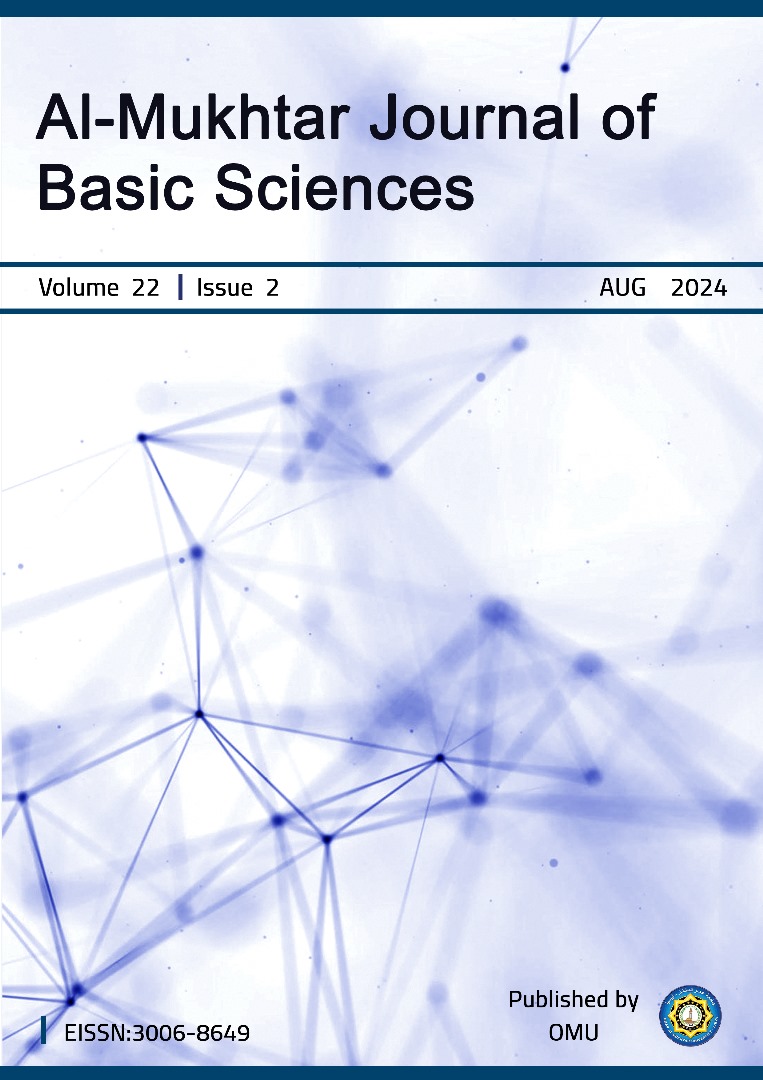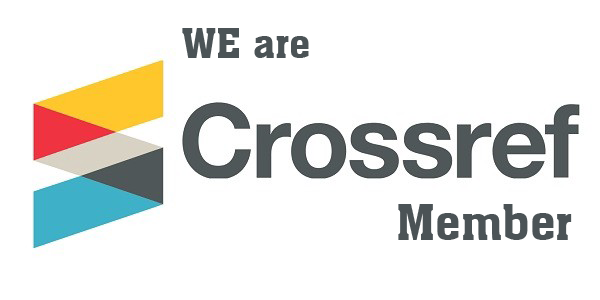Evaluation of Empty Fava Beans Pods as Bioadsorbent for the Removal of Pb2+ from Aqueous Solutions Using Phytoadsorption Technique
DOI:
https://doi.org/10.54172/mc14jz12Keywords:
Phytosorption, Dry Empty Fava Beans Pods, Lead Heavy Metal, Aqueous SolutionsAbstract
Environmental contamination with toxic heavy metals is a globally concerned issue. Cleaning up heavy metals from contaminated aquatic systems forces a lot of challenges. Phytoremediation processes are the interesting safe techniques that were focused by scientists and governments during the last decades for the up-taking of toxic heavy metals from ecosystems. Consequently, phytoadsorption approach was applied in this research using dry empty pods of fava beans (Vicia faba L.) to evaluate their potential for the removal of toxic lead heavy metal from its aqueous solutions. We have developed a green and simple method to remove lead ions (Pb2+) from their aquatic system. The obtained results have showed that the 350‒1000-μm biomass particles of fava beans pods were able to take up lead ions at highly rated removal percentages and high adsorption capacity using 100-ml, 100-ppm solutions at room temperature and neutral pH. For example, the highest removal percentage of lead ions was 66.8% with an absorption capacity of 3.34 mg/g using 2.0 g at a shaking rate of 200 OSC/min after 30 min. On the other hand, the removal percentage of lead ions using 0.1 g of fava beans pods biomass was 36.8 % with the highest absorption capacity of 36.8 mg/g at a shaking rate of 800 OSC/min at the same period of time. Therefore, the empty fava beans (Vicia faba L.) pods can be used as potential phytoadsorbents for the removal of lead and other heavy metals from the contaminated aquatic ecosystems.
References
Abdel-Halim, S.H., Shehata, A.M.A. and El-Shahat, M.F. (2003). Removal of Lead Ion from Industrial Wastewater by Different Types of Natural Materials. Water Research, 37,1678‒1683.
Aebeed, A.S., Sharif, S.A., Amer, A.H., Jibreel, A.M., Alsoaiti, S.F. (2022). Growth and Reproduction of the Earthworm After Exposure to Eisenia fetida Sub Lethal Concentration from Remilitine and Lead Mixture. SJUOB, 35,199‒203.
Amuda, O.S., Giwa, A.A., Bello, I.A. (2007). Removal of Heavy Metal from Industrial Wastewater Using Modified Activated Coconut Shell Carbon. Biochemical Engineering Journal, 36, 174‒181.
Appenroth, K.J. (2010). Definition of “heavy metals” and their role in biological systems, Soil heavy metals. Springer, 19‒29.
Breydo, L., Uversky, V.N. (2011). Role of metal ions in aggregation of intrinsically disordered proteins in neurodegenerative diseases. Metallomics, 2011, 3,1163‒1180.
Briggs, D. (2003). Environmental pollution and the global burden disease. British Medical Bulletin, 68, 1‒24.
Chen., J.P. (2012). Decontamination of heavy metals: processes, mechanisms, and applications, 1st Ed., CRC Press, New York.
Dubey, A.M.S.S.A., Mishra, A., Singhal, S. (2014). Application of dried plant biomass as novel low-cost adsorbent for removal of cadmium from aqueous solution. International Journal of Environmental Science and Technology, 11, 1043‒1050.
Erdei, L., Mezôsi, G., Mécs, I., Vass, I., Fôglein, F., Bulik, L. (2005). “Phytoremediation as a program for decontamination of heavy-metal polluted environment,” in Proceedings of the 8th Hungarian Congress on Plant Physiology and the 6th Hungarian Conference on Photosynthesis, 49, 75‒76.
Etorki, A.M., El-Rais, M., Mahabbis, M.T., and Moussa, N.M. (2014). Removal of some heavy metals from wastewater by using of fava beans. Am. J. Anal. Chem., 5, 225‒234.
Hashem, M.A. (2007). Adsorption of Lead Ion from Aqueous Solution by Okra Wastes. Interna-tional Journal of Physical Science, 2, 178‒184.
Ibeanusi, V.M., Grab, D. A., In collaboration with Jensen, L., Stephen Ostrodka, S. (2004) Environmental Protection Agency. Radionuclide Biological Remediation Resource Guide, U. S. Environmental Protection Agency.
Ibrahim, M.A., Sabti, M.Z., Mousa, S.H. (2021). In vitro accumulation potentials of heavy metals in big-sage (Lantana camara L.) plant. DYSONA – Life Science, 2(2), 12‒17.
Jaishankar, M., Tseten, T., Anbalagan, N., Mathew, B.B., Beeregowda K.N. (2014). Toxicity, mechanism and health effects of some heavy metals. Interdisciplinary Toxicology, 7, 60‒72.
Karman, S.B., Diah, S.Z.M., Gebeshuber, I.C. (2015). Raw Materials Synthesis from Heavy Metal Industry Effluents with Bioremediation and Phytomining: A Biomimetic Resource Man-agement Approach. Advances in Materials Science and Engineering, Volume 2015, Article ID 185071, 21 pages.
Mueller, J.G., Cerniglia, C.E., Pritchard, P.H. (2009). Bioremediation of Environments Contaminated by Polycyclic Aromatic Hydrocarbons. In Bioremediation: Principles and Applications, Cambridge University Press, Cambridge.
Naji, A.M., Kareem, S.H., Nief, O.A., Flaeeh, H.C. (2019). Fruit and Agricultural Waste Cortex as Natural Resins Adsorbents for Removal of Heavy Metal Ions from Waste Water. Plant Ar-chives, 19, 2, 966‒971.
Prasad, M.N.V., Freitas, H. (2000). Removal of toxic metals from solution by leaf, stem and root phytomass of Quercus ilex L. (holly oak). Environ. Pollution, 110, 277‒283.
Qadeer, R., Akhtar, S. (2005). Study of Lead Ion Adsorption of Active Carbon. Turk. J. Chem., 29, 95‒99.
Rahman, M., Sathasivam, K.V. (2015). Heavy metal adsorption onto Kappaphycus sp. from aqueous solutions: the use of error functions for validation of isotherm and kinetics models. BioMed research international, Volume 2015, Article ID 126298.
Rajakaruna, N. Tompkins, K.M., Pavicevic, P.G. (2006). Phytoremediation: An Affordable Green Technology for the Clean-up of Metal-Contaminated Sites in Sri Lanka. Cey. J. Sci. (Bio. Sci.), 35, 25‒39.
Redha, A.A. (2020). Removal of heavy metals from aqueous media by biosorption. Arab Journal of basic and applied sciences, 27, 183‒193.
Salim, R.M.D., Asik, J., Sarjadi, M.S. (2021). Chemical functional groups of extractives, cellulose and lignin extracted from native Leucaena leucocephala bark. Wood Sci. Technol., 55, 295‒313.
Sánchez-Ponce, L., Díaz-de-Alba, M., Casanueva-Marenco, M.J., Gestoso-Rojas, J., Ortega-Iguña, M., Galindo-Riaño, M.D., Granado-Castro, M.D. (2022). Potential Use of Low-Cost Agri-Food Waste as Biosorbents for the Removal of Cd(II), Co(II), Ni(II) and Pb(II) from Aque-ous Solutions. Separations, 9(10), 309‒.
Sekhar, K.C., Kamala, C.T., Chary, N.S., Anjaneyulu, Y. (2003). Removal of heavy metals using a plant biomass with reference to environmental control. Int. J. Miner. Process, 68, 37‒45.
Sharif, S.A., El-Moghrabi, H.A.M.N., El-Mugrbi, W.S., Alhddad, A.I. (2023). Fava Beans (Vicia faba L.) Phytosorption of Pb2+ Ions from its Aqueous Solutions. Asian J. Green Chem., 7, 85‒90.
Sharif, S.A., El-Mugrbi, W.S., Alhddad, A.I., El-Moghrabi, H.A.M.N., Elarfy A.R., Alshahopy, N.A. (2023). Removal of Toxic Lead Ions from their Aqueous Solutions Using Fava Beans Phytoadsorption Technique. AlQalam Journal of Medical and Applied Sciences, Special Is-sue for 6th International Conference in Basic Sciences and Their Applications (6th ICBSTA, 2023), P: 71‒86, 2/12/2023
Shin, E.W., Rowell, R.M. (2005). Cadmium Ion Sorption onto Lignocellulosic Biosorbent Modified by Sulfonation: The Origin of Sorption Capacity Improvement. Chemosphere, 60, 1054‒1061.
Waoo, A., Khare A.S., Ganguli, S. (2014). Comparative Tissue Culture Studies on Lantana Camara and Datura Inoxia at Heavy Metal Contaminated Site and Phytoremediation Approach at Industrially Contaminated Sites. International Journal of Advances in Biology, 1, 55‒62.
Xiong, T., Dumat, C., Pierart, A., Shahid, M., Kang, Y., Li, N., Bertoni, G., Laplanche, C. (2016). Measurement of metal bioaccessibility in vegetables to improve human exposure assessments: field study of soil–plant–atmosphere transfers in urban areas, South China. Environ. Geochem. Health, 38, 1283‒1301.
Zaynab, M., Al-Yahyai, R., Ameen, A., Sharif, Y., Ali, L., Fatima, M., Khan, K.A., Li, S. (2022). Health and environmental effects of heavy metals. J. King Saud Univ. Sci., 34, 101653.
Downloads
Published
Issue
Section
License
Copyright (c) 2024 Salaheddin A. Sharif, Widad S. El-Mugrbi, Hameda A. M. N. El-Moghrabi, Mohamed A. B. Mostafa, Adel Alsharkasi, Reham B. A.-H. Al Hussein, Khadija A. Abubakr (Author)

This work is licensed under a Creative Commons Attribution-NonCommercial 4.0 International License.
Copyright of the articles Published by Al-Mukhtar Journal of Basic Sciences (MJBS) is retained by the author(s), who grant MJBS a license to publish the article. Authors also grant any third party the right to use the article freely as long as its integrity is maintained and its original authors and cite MJSc as the original publisher. Also, they accept the article remains published by the MJBS website (except in the occasion of a retraction of the article).












